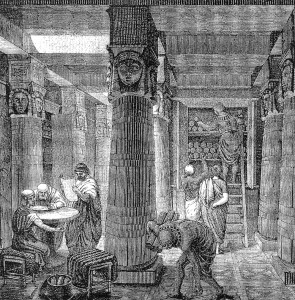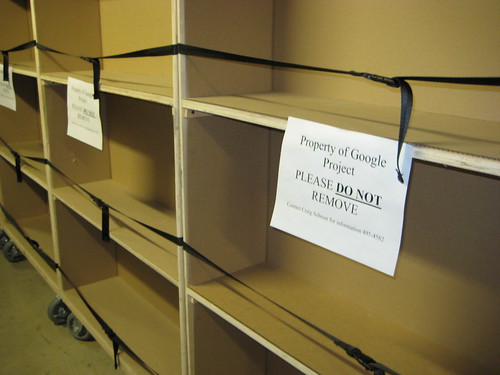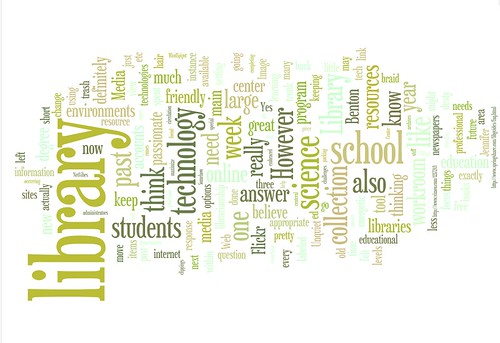Postman as soothsayer
After reading the first chapter of Technopoly many readers may view Neil Postman (1992) as a technophobe. He decries the use of computers in education, claims technology redefines words like “freedom” and “history” and that those who are competent with new technologies are granted “undeserved authority and prestige” (no page number listed). Some may claim that Postman has been wrong on all accounts, asserting that computers have improved education, technology has increased the amount of freedom for almost all affected, and that if a person has gained competence in a particular area then they are probably deserving of some sort of authority. A more through examination of Postman’s claims are needed to determine whether he is eerily prescient or truly a technophobe.
Postman (1992) believes that the use of computers in education will only teach “children to operate computerized systems instead of things that are more valuable to children” (no page number listed). He feels that computers are teaching students to operate computers instead of providing them with a quality education. While this view may seem far fetched in 2013, it is possible that there is some validity to Postman’s claim. Lei and Zhou (2007) found that the more time students spent on computers (while in school) the less they gain. The authors noted that there was a certain amount of time (approximately 3 hours or more) that resulted in negative gains for students (as measured by their GPA). It may seem unlikely that students would be spending more than 3 hours on a computer in school, but most school districts are encouraging their schools to invest more in technology and having students spend more time online. Students are also likely to spend some of their leisure time on a computer, resulting in the average student probably spending far more than 3 hours in front of a computer screen. Harter and Harter (2004) also found that, contrary to what some educators believe, the use of technology in class does not increase student scores.
The supporters of technology in education claim that students are entering a different world, a world where the need for knowledge has been superseded by the need for critical thought. It is argued that with the amount of information now available to students it is more important to teach them how to sift through this information instead of teaching them information. While critical thought has an important place in learning, it is not an education. If this were true, then critical thought would have become the focus of education when the first library opened its doors. Instead, the need for students to learn something other than critical thought has endured. Postman (1992) notes that print stresses individualized learning and competition; computers have taken this to a whole new level. In many school districts “individualized learning” is a buzzword, used to imply that students will be learning what they want and when they want. How this will affect education and society remains to be seen.
Another claim made by technophiles is that technology has increased the amount of freedom for nearly everyone on earth. They point to the access most of the population has to an incredible amount of information via the internet. Postman (1992) wonders who will really gain greater power and freedom with the onslaught of technology, and whose power and freedom will be reduced as a result. Students are more likely to rely on the internet for information than their teachers, so while students have gained power the teacher has lost it. The teacher has also lost power as a result of technology in another way; as school districts increase the number of online courses they offer they are able to reduce the number of teachers needed for facilitation. One teacher may not have been able to teach one hundred students in a classroom setting, but they are asked to in an online setting. The term “teaching” is used loosely here, however, as the online teacher often ends up marking much more than teaching. Students are directed to “canned” courses (courses that are already set up online and need little to no outside help to deliver content) and their only interaction with the teacher is when they submit their assignments.
Postman (1992) states that those who become skilled in the use or knowledge of a new technology become an “elite group” with “undeserved authority and prestige” (no page number listed). He believes that these groups form a conspiracy against those who do not posses this knowledge and will wield power over them. Some may claim that these elite groups have earned their skill or knowledge and thus are deserving of their authority. Postman, however, worries that this is just another way to separate winners and losers.
Although technology has been championed as a cure-all ready to solve the woes of education, the environment, healthcare, and the economy, Postman (1992) believes it may affect our world negatively. He is concerned that concepts like knowledge and freedom are being irretrievably altered (and not for the better). Postman notes how teachers are rapidly becoming the “losers”, cheering on their own demise without even realizing it. There is a power shift occurring and teachers are the ones losing power; where this balance of power is shifting is still unknown. Although Postman may seem like a technophobe, it can be argued that he has shown remarkable foresight. Nowhere is this more evident than when he wonders if the computer will “raise egocentrism to a virtue” (no page number listed).
Now how is it he knew about Twitter 14 years before it came into existence?
Harter, C. & Harter, J. (2004). Teaching with Technology: Does Access to Computer Technology Increase Student Achievement? Eastern Economic Journal, 30, 507 – 514.
Lei, J. & Zhao, Y. (2007). Technology uses and student achievement: A longitudinal study. Computers and Education, 49, 284 – 296.
Postman, N. (1992). Technopoly. New York: Vintage Books. Retrieved from http://books.google.ca/books






Some Thoughts on Willinsky’s In Democracy and Education
In Democracy and Education: The Missing Link May Be Ours, John Willinsky (2002) makes the case for free and open access to scholarly research in education. Under the current paradigm, publishers, whose revenue is in the billions of dollars (Stevenson, 2010, para. 3), control most academic and scientific research publication. Interestingly, Willinksy predicates his case not on financial grounds, but on the grounds that open access can better serve democracy through the creation of an informed public.
Most criticism directed at the academic publishing industry today is based on the high subscription fees charged to universities and the proposition that researchers are unable to access their own published works without a subscription (Stevenson, 2010). It should also be noted that the authors and reviewers of academic papers are typically not paid for their work. Instead, they earn prestige in their field, which can play a role in gaining tenure and winning research grants (Opal, 2013).
Despite the current furor over the control and economics of academic publishing, Willinsky believes that by developing tools to improve public access to educational research, the public will become informed stakeholders in shaping education policy and directing future research. It is only through open access to research and ideas, that Dewey’s aims in education and democracy can be furthered.
Willinsky’s assertion that open access can benefit the general public simply by the virtue of being open can be illustrated with the case of Jack Andraka. After the death of a family friend, 14-year-old Andraka was curious to understand pancreatic cancer and so he chose to make it the subject of a school science fair (Andraka, 2013). His attempts to access scientific research were often thwarted by expensive article fees (and a mother unwilling to continuously pay for articles Andraka purchased, downloaded, and then tossed into the recycling bin). With a little clever problem-solving, Andraka managed to access journal articles for free, often by emailing the authors directly. His hard work paid off. Through his efforts and a little help from a researcher at Johns Hopkins University, Andraka invented an early test for pancreatic cancer and won a $75 000 scholarship from the Intel Science Fair (Bleier, 2013).
Despite the challenges posed by the current scholarly publishing system, Andraka was successful because he never gave up. He was not deterred by expensive journal articles and managed to outwit the current system and access articles for free. With open access, students, who may not be as bold or determined to succeed as Andraka, will be able to access the research they need. Indeed, this is the point that Willinsky makes. Willinsky asserts that we must test the idea that open access to research will have a beneficial impact on society’s “participation in civic and educational forums” (Willinsky, 2002, p. 13). Clearly, in Andraka’s case, it could have made his efforts easier—and less expensive for his mother.
Of course, all this assumes that the individual is capable of understanding the research as published. Certainly, Andraka is singular among his peers. Few teenagers are inclined to seek out academic papers to help them understand real world problems. Scholarly papers are not typically written for the general public, let alone teenagers. The audience for research is usually other researchers. Willinsky (2002) touches upon this briefly by stating that open access may encourage “faculty and students to give greater thought to writing for this expanded audience” (Willinsky, 2002, p. 8).
While Willinsky’s position is admirable, and according to Dewey, moral (Willinsky, 2002, p.6), the crux of the problem—how to bring about meaningful change to the world of academic publishing in order to accomplish his vision—is not addressed. Part of the problem lies in the prestige that comes with publication in an established journal. Unless publication to open access databases carry an equivalent amount of cachet as the more reputable journals, many authors will still default to the dominant traditional system of publishing. Willinsky acknowledges this. Any new system of publishing will need to be “sensitive to the career aspirations of contributors” (Willinsky, 2002, p. 13).
Willinsky, and those who believe as he does, are up against an entrenched business model and the culture of academic research and publishing. Neither will be easily changed. Yet, Willinsky draws inspiration from traditional news media corporations and their struggle for relevancy in the Internet age. Willinsky considers the “disenchantment with the press as democracy’s great hope” (Willinsky, 2002, p. 11).
The Internet and its ability to democratize the sharing of knowledge has brought about much change and upheaval in our traditional knowledge-governing institutions. This process is still in its infancy and the results of Willinsky’s grand experiment to bring about change in public forums through the open access of knowledge and research has yet to reach fruition. This change will not come easy. As long as their are economic interests at stake—in this case, the billions of dollars in revenue generated through academic publishing—the road to open access will be long and arduous.
References
Andraka, J. (2013, February 18). Why science journal paywalls have to go. PLOS Blogs: The Student Blog. Retrieved from: http://blogs.plos.org/thestudentblog/2013/02/18/why-science-journal-paywalls-have-to-go/
Bleier, E. (2013, January 29). Jack andraka, 15, develops early ‘dip stick’ test for pancreatic cancer. Opposing Views. Retrieved from: http://www.opposingviews.com/i/health/conditions/cancer/jack-andraka-15-develops-early-dip-stick-test-pancreatic-cancer#
Opal, P. (2013, March 26). Don’t let the dream of open access journals die. The Atlantic. Retrieved from: http://www.theatlantic.com/health/archive/2013/03/dont-let-the-dream-of-open-access-journals-die/274371/
Stevenson, A. (2010, November 29). The economic case for open access in academic publishing. Ars Technica. Retrieved from: http://arstechnica.com/science/2010/11/the-economic-case-for-open-access-in-academic-publishing/
Willinsky, J. (2002). Democracy and education: The missing link may be ours. Harvard Educational Review, 72(3), 1-21. Retrieved from: http://knowledgepublic.pbworks.com/f/WillinskyHER.pdf